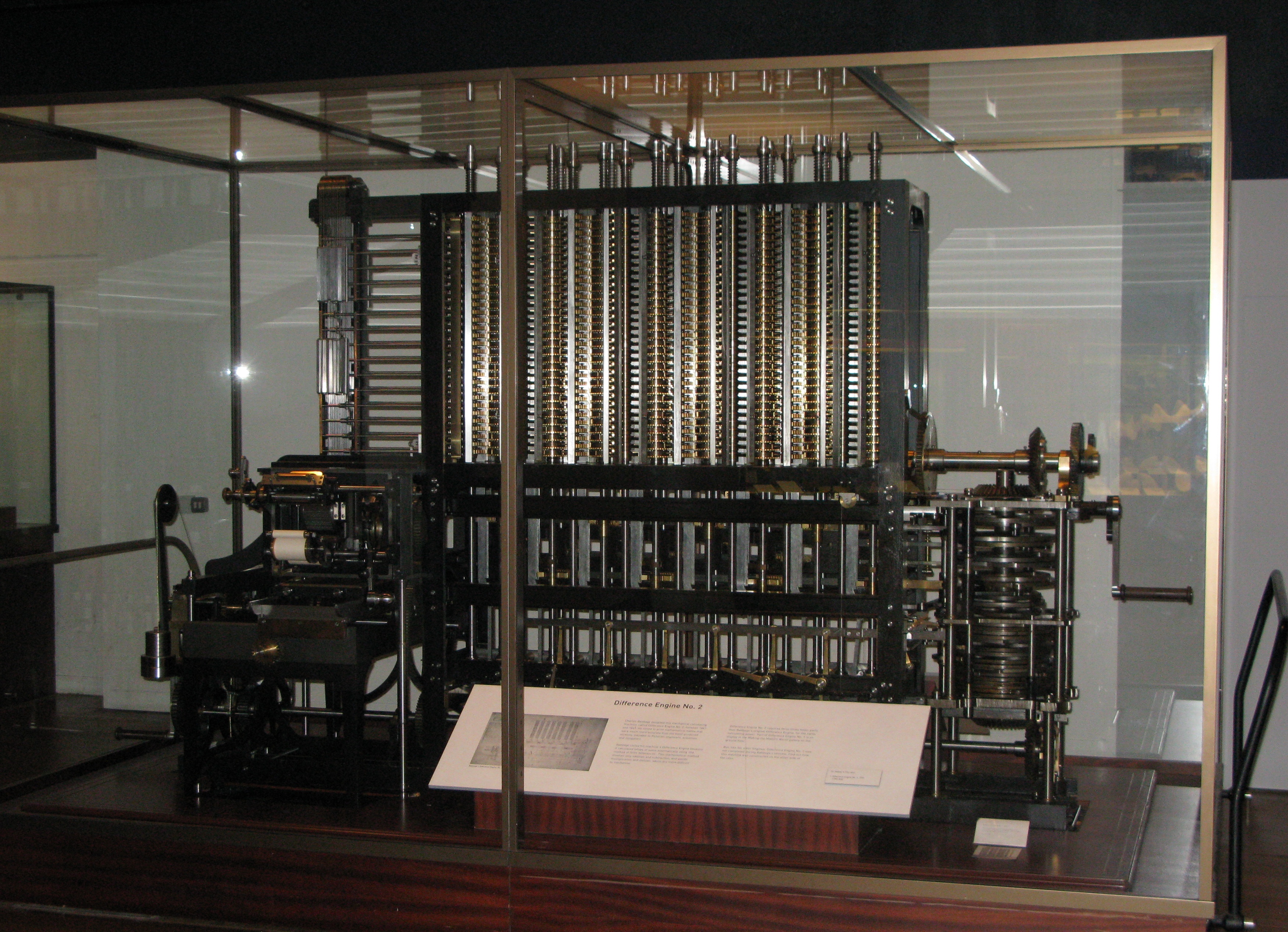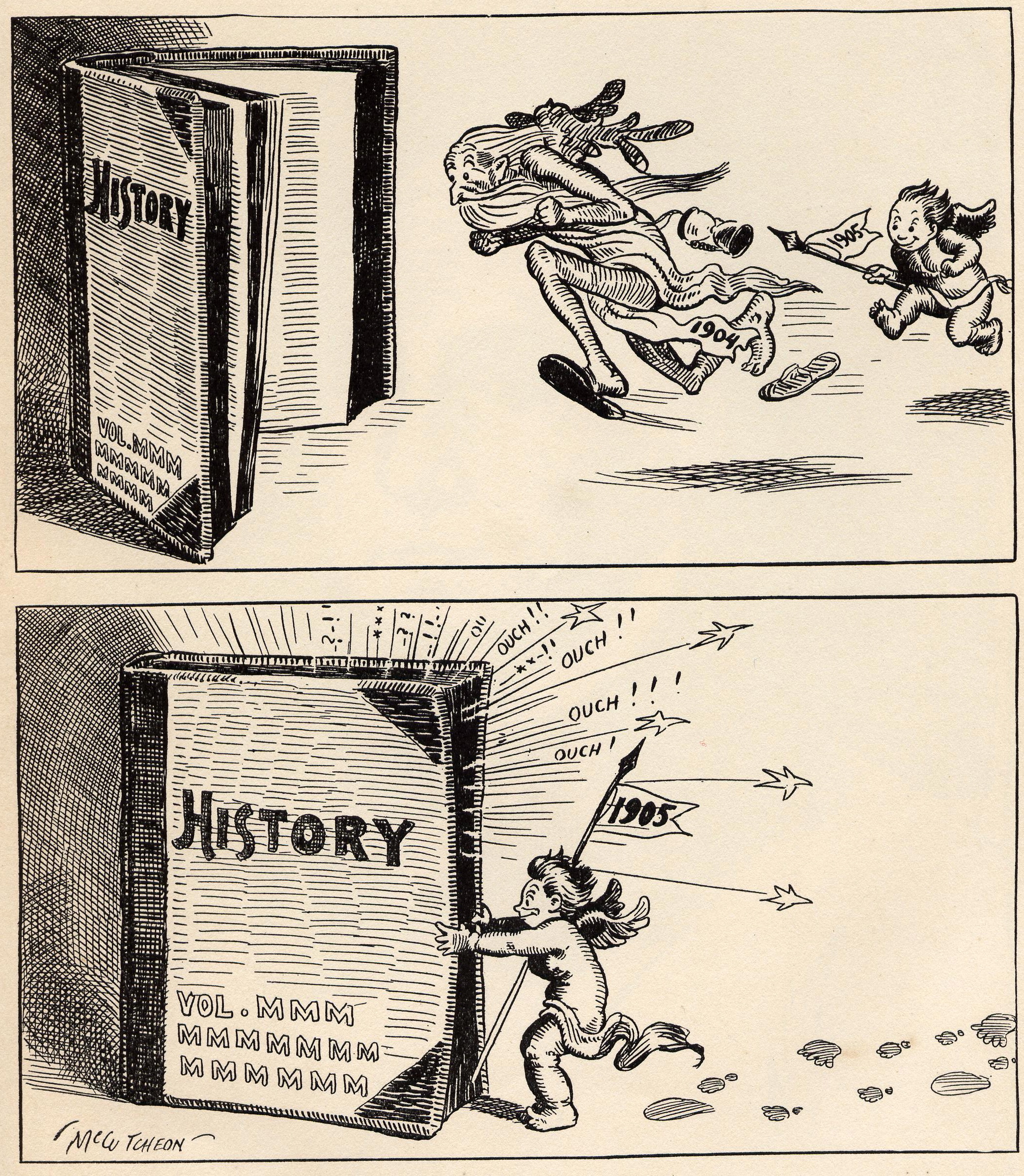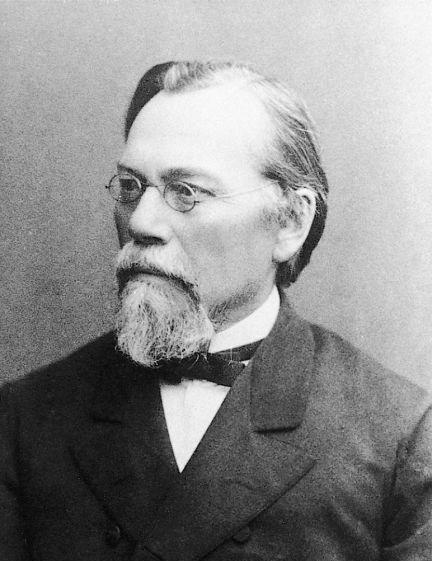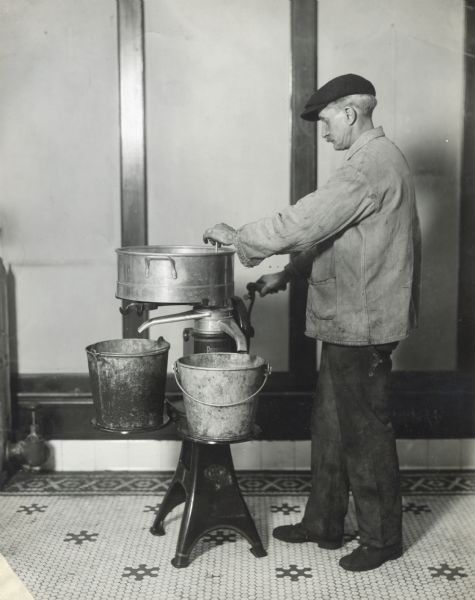|
Martin Wiberg
Martin Wiberg (4 September 1826 – 29 December 1905) was a Swedish inventor. He enrolled at Lund University in 1845 and became a Doctor of Philosophy in 1850. He is known as a computer pioneer for his c. 1859 (1857-1860) invention of a machine the size of a sewing machine that could print logarithmic tables (first interest tables appeared in 1860, logarithmic in 1875). The logarithmic tables were subsequently published in English, French and German in 1876. The device was investigated by the French academy of science which also wrote an extensive report on it in 1863. The device was inspired by the similar work done by Per Georg Scheutz (had the same capacity: 15-digit numbers and fourth-order differences) and has similarities with Charles Babbage's difference engine. (Scheutz machine was based on the difference engine). The device is preserved at Tekniska museet (The Technical Museum) of Sweden in Stockholm. Wiberg failed to sell his machine, and also failed to sell the outp ... [...More Info...] [...Related Items...] OR: [Wikipedia] [Google] [Baidu] [Amazon] |
Viby, Kristianstad
Viby is a Urban areas in Sweden, locality situated in Kristianstad Municipality, Skåne County, Sweden with 991 inhabitants in 2010. References Populated places in Kristianstad Municipality {{Skåne-geo-stub ... [...More Info...] [...Related Items...] OR: [Wikipedia] [Google] [Baidu] [Amazon] |
Difference Engine
A difference engine is an automatic mechanical calculator designed to tabulate polynomial functions. It was designed in the 1820s, and was created by Charles Babbage. The name ''difference engine'' is derived from the method of finite differences, a way to interpolate or tabulate functions by using a small set of polynomial co-efficients. Some of the most common mathematical functions used in engineering, science and navigation are built from logarithmic and trigonometric functions, which can be approximated by polynomials, so a difference engine can compute many useful tables. History The notion of a mechanical calculator for mathematical functions can be traced back to the Antikythera mechanism of the 2nd century BC, while early modern examples are attributed to Pascal and Leibniz in the 17th century. In 1784 J. H. Müller, an engineer in the Hessian army, devised and built an adding machine and described the basic principles of a difference machine in a book pu ... [...More Info...] [...Related Items...] OR: [Wikipedia] [Google] [Baidu] [Amazon] |
19th-century Swedish Inventors
The 19th century began on 1 January 1801 (represented by the Roman numerals MDCCCI), and ended on 31 December 1900 (MCM). It was the 9th century of the 2nd millennium. It was characterized by vast social upheaval. Slavery was abolished in much of Europe and the Americas. The First Industrial Revolution, though it began in the late 18th century, expanded beyond its British homeland for the first time during the 19th century, particularly remaking the economies and societies of the Low Countries, France, the Rhineland, Northern Italy, and the Northeastern United States. A few decades later, the Second Industrial Revolution led to ever more massive urbanization and much higher levels of productivity, profit, and prosperity, a pattern that continued into the 20th century. The Catholic Church, in response to the growing influence and power of modernism, secularism and materialism, formed the First Vatican Council in the late 19th century to deal with such problems and confirm cer ... [...More Info...] [...Related Items...] OR: [Wikipedia] [Google] [Baidu] [Amazon] |
1905 Deaths
As the second year of the massive Russo-Japanese War begins, more than 100,000 die in the largest world battles of that era, and the war chaos leads to the 1905 Russian Revolution against Nicholas II of Russia (Dmitri Shostakovich, Shostakovich's Symphony No. 11 (Shostakovich), 11th Symphony is subtitled ''The Year 1905'' to commemorate this) and the start of Revolution in the Kingdom of Poland (1905–07), Revolution in the Kingdom of Poland. Canada and the U.S. expand west, with the Alberta and Saskatchewan provinces and the founding of Las Vegas. 1905 is also the year in which Albert Einstein, at this time resident in Bern, publishes his four Annus Mirabilis papers, ''Annus Mirabilis'' papers in ''Annalen der Physik'' (Leipzig) (March 18, May 11, June 30 and September 27), laying the foundations for more than a century's study of theoretical physics. Events January * January 1 – In a major defeat in the Russo-Japanese War, Russian General Anatoly Stessel su ... [...More Info...] [...Related Items...] OR: [Wikipedia] [Google] [Baidu] [Amazon] |
1826 Births
Events January–March * January 15 – The French newspaper ''Le Figaro'' begins publication in Paris, initially as a satirical weekly. * January 17 – The Ballantyne printing business in Edinburgh (Scotland) crashes, ruining novelist Sir Walter Scott as a principal investor. He undertakes to repay his creditors from his writings. His publisher, Archibald Constable, also fails. * January 18 – In India, the Siege of Bharatpur ends in British victory as Lord Combermere and Michael Childers defeat the princely state of Bharatpur, now part of the Indian state of Rajasthan. * January 30 – The Menai Suspension Bridge, built by engineer Thomas Telford as the first major suspension bridge in world history, is opened between the island of Anglesey and the mainland of Wales. * February 6 – James Fenimore Cooper's novel ''The Last of the Mohicans'' is first printed, by a publisher in Philadelphia. * February 8 – Unitarian Bernardino Rivadavia becomes the first Pr ... [...More Info...] [...Related Items...] OR: [Wikipedia] [Google] [Baidu] [Amazon] |
Difference Engine
A difference engine is an automatic mechanical calculator designed to tabulate polynomial functions. It was designed in the 1820s, and was created by Charles Babbage. The name ''difference engine'' is derived from the method of finite differences, a way to interpolate or tabulate functions by using a small set of polynomial co-efficients. Some of the most common mathematical functions used in engineering, science and navigation are built from logarithmic and trigonometric functions, which can be approximated by polynomials, so a difference engine can compute many useful tables. History The notion of a mechanical calculator for mathematical functions can be traced back to the Antikythera mechanism of the 2nd century BC, while early modern examples are attributed to Pascal and Leibniz in the 17th century. In 1784 J. H. Müller, an engineer in the Hessian army, devised and built an adding machine and described the basic principles of a difference machine in a book pu ... [...More Info...] [...Related Items...] OR: [Wikipedia] [Google] [Baidu] [Amazon] |
Pulse Jet Engine
In medicine, the pulse refers to the rhythmic pulsations (expansion and contraction) of an artery in response to the cardiac cycle (heartbeat). The pulse may be felt (palpated) in any place that allows an artery to be compressed near the surface of the body close to the skin, such as at the neck (carotid artery), wrist (radial artery or ulnar artery), at the groin (femoral artery), behind the knee (popliteal artery), near the ankle joint (posterior tibial artery), and on foot (dorsalis pedis artery). The pulse is most commonly measured at the wrist or neck for adults and at the brachial artery (inner upper arm between the shoulder and elbow) for infants and very young children. A sphygmograph is an instrument for measuring the pulse. Physiology Claudius Galen was perhaps the first physiologist to describe the pulse. The pulse is an expedient Touch, tactile method of determination of Systole (medicine), systolic blood pressure to a trained observer. Diastolic blood pressure i ... [...More Info...] [...Related Items...] OR: [Wikipedia] [Google] [Baidu] [Amazon] |
Cream Separator
A separator is a centrifugal device that separates milk into cream and skimmed milk. Separation was commonly performed on farms in the past. Most farmers milked a few cows, usually by hand, and separated milk. Some of the skimmed milk was consumed while the rest was used to feed calves and pigs. Enough cream was saved to make butter, and the excess was sold. Today, milk is separated in industrial dairies. Sufficient cream is returned to the skimmed milk before sale. History Before the advent of centrifugal separators, separation was performed by letting milk sit in a container until the cream floated to the top and could be skimmed off by hand. A variant container-separator had a nozzle at the bottom which was opened to allow the milk to drain off. A window in the side, near the nozzle at the bottom, allowed the operator to observe when the milk was drained. The centrifugal separator was first manufactured by Gustaf de Laval, making it possible to separate cream from milk ... [...More Info...] [...Related Items...] OR: [Wikipedia] [Google] [Baidu] [Amazon] |
Nordisk Familjebok
(, 'Nordic Family Book') is a Swedish language, Swedish encyclopedia that was published in print from between 1876 and 1993, and that is now fully available in digital form via Project Runeberg at Linköping University. The public domain editions of the encyclopedia remain important reference works in Finland, especially on Finnish Wikipedia. History First edition began when Halmstad publisher hired an editor, linguist , in 1874 to publish a six-volume encyclopedia. Linder drew up a plan for the work, designed the editorial team and created a large circle of experts and literary figures, who submitted article proposals and wrote and reviewed them. Under Linder's direction, the articles were then edited to make them as formal, consistent and accurate as possible. Much attention was paid to Nordic subjects, mainly Swedish and Finnish, where sources and models were often lacking, so extensive and time-consuming pioneering work had to be done. As a result, the earlier plan f ... [...More Info...] [...Related Items...] OR: [Wikipedia] [Google] [Baidu] [Amazon] |





